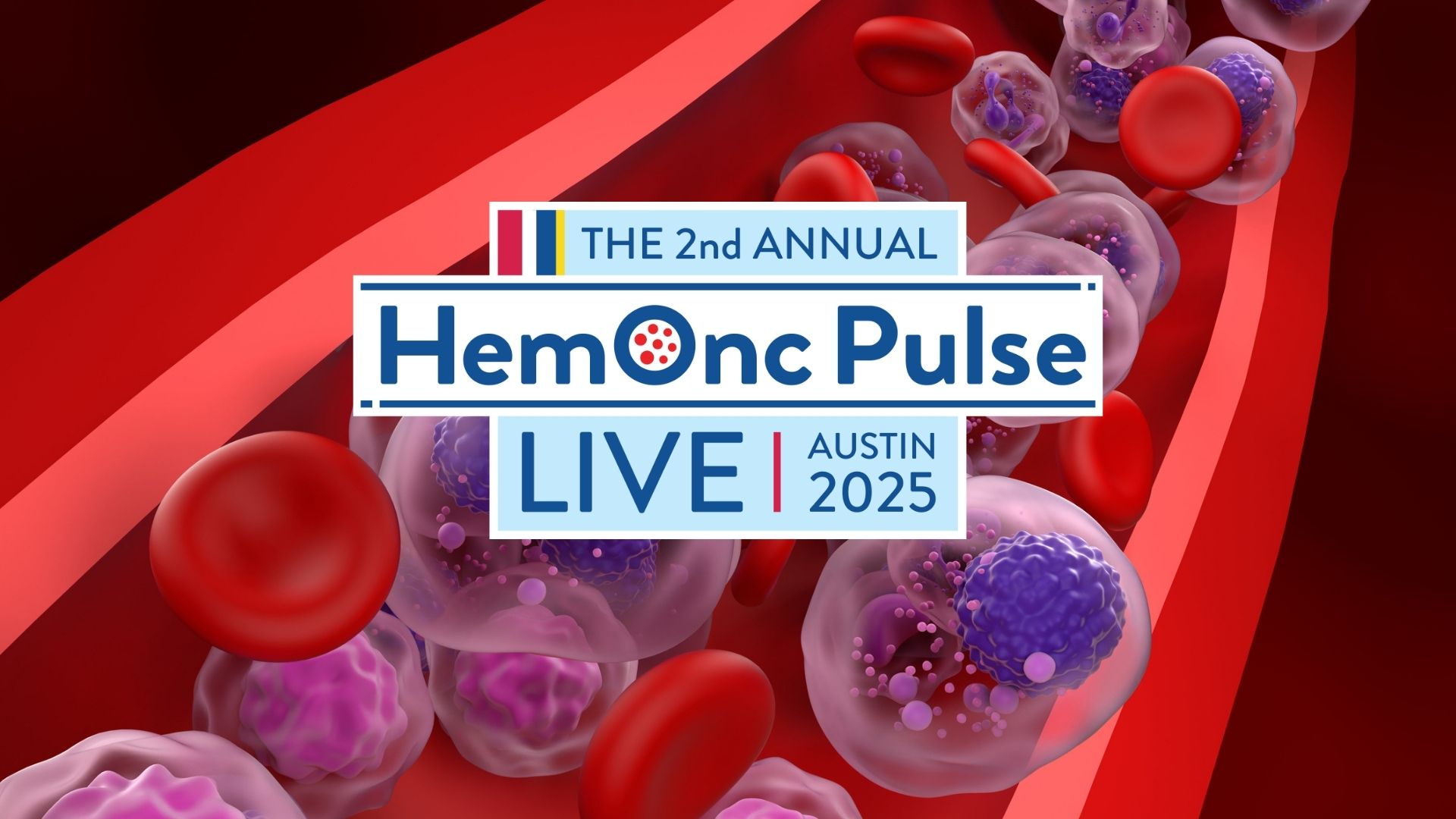
As illustrated by the presentations at the 2021 ASCO annual meeting, the field of multiple myeloma (MM) is changing rapidly.1 However the jury is still out on whether we are curing a subset of patients or only prolonging remissions.
In newly diagnosed MM (NDMM), the Myeloma UK nine OPTIMUM (MUKnine/OPTIMUM) phase II trial enrolled patients with ultra-high-risk MM, based on the presence of 2 or more adverse genetic lesions or gene expression SKY92 profiling) or plasma cell leukemia. Treatment consisted of 6 cycles of daratumumab, bortezomib, lenalidomide, cyclophosphamide, and dexamethasone (Dara-CVRd) followed by augmented high-dose melphalan (HDMEL) and bortezomib-augmented autologous stem cell transplantation (ASCT), then Dara-VRd consolidation and Dara-R maintenance. The results showed an overall response rate (ORR) of 94% at the end of induction and 83% at day 100 after ASCT.2 These high ORRs and deep remissions are encouraging, but despite this aggressive approach, 6.5% patients in this trial had progressive disease after ASCT. A subanalysis of the FORTE trial showed that carfilzomib, lenalidomide, and dexamethasone (KRd) followed by ASCT prolonged progression-free survival (PFS) compared with KRd × 12 cycles in NDMM patients with high-risk features (4-year PFS 62% vs 45%, respectively), as well as in patients with standard risk MM (82% vs 67%).3 This suggests that an additional therapy (ASCT) has a significant benefit compared with additional cycles of the same therapy.
While triplet induction has historically been the standard of care in NDMM, we saw further evidence that quadruplets containing daratumumab improve PFS over triplets in an updated analysis of Part 1 of the CASSIOPEIA trial, in which median PFS was not reached in the daratumumab, bortezomib, thalidomide, and dexamethasone (D-VTd) group vs 51.5 months in the VTd group.4 In patients with newly-diagnosed light chain (AL) amyloidosis in the ANDROMEDA trial, response rates were improved with daratumumab plus bortezomib, cyclophosphamide, and dexamethasone (D-VCd) compared with VCd alone (hematological complete remission (HCR) 59% vs 19%; ORR 92% vs 77%, respectively).5 However, in myeloma, it remains unclear whether an additional drug in a quadruplet obviates the benefit of transplant, whether minimal residual disease (MRD)-driven transplant decisions can help us identify those who benefit the most, or whether quadruplets have a survival benefit.
Maintenance therapy in myeloma is also becoming more nuanced. The FORTE trial compared KR with R as maintenance therapy and showed a significant improvement in PFS in high-risk and standard-risk subgroups.3 Unsurprisingly, doublet maintenance prolongs PFS, but whether it translates to a prolonged OS remains unclear. Long-term toxicities and impact on patient quality of life with no infusion-free interval may also be concerns. CASSIOPEIA Part 2 compared maintenance daratumumab IV q8 weeks (DARA, n=442) with observation (OBS, n=440) for two years. Patients who received daratumumab had improved median PFS (NR vs 46.7 months). However, whereas the VTd/DARA patient subgroup had a PFS benefit over VTd/OBS. there was no additional benefit in the D-VTd/DARA subgroup over D-VTd/OBS, suggesting that receiving daratumumab, either during induction or maintenance, is sufficient to achieve PFS benefit.4 This suggests that there may be a role for MRD in guiding treatment decisions. Ongoing studies (AURIGA, DRAMMATIC, GRIFFIN, PERSEUS, NCT04497961) should shed light on optimal maintenance (duration, role of sustained MRD negativity, and role of daratumumab in induction-naïve patients).
Given the inconvenience of bone marrow (BM) biopsies and the disadvantage of patchy infiltration, finding peripheral blood MRD using techniques such as mass spectrometry (MS) can improve feasibility. Three trials reported comparisons of MS versus BM MRD. In GEM2012MENOS65, MRD was analyzed in peripheral blood via MS and in BM by next-generation flow with results in agreement in about 80% patients.6 MRD double-negative cases increased with delivery of treatment. The Elo-KRd trial showed concordance between MS by liquid chromatography and MRD by next-generation sequencing in about 70% patients after cycle 8.7 The GEM2012MENOS65 and STaMINA trials showed that MS was predictive of PFS independent of MRD and an OS benefit was seen in the STaMINA trial similar to MRD negativity.6,8 Thus, MRD in peripheral blood provides a gateway to BM MRD status.
Triple-class refractory patients have a median OS of 8.6 months and an ORR of 31% similar to recent approved therapies (selinexor, belantamab mafodotin-blmf, and melflufen),9 with the exception of idecabtagene vicleucel (ide-cel), which resulted in an ORR of 73%.10 Updates on clinical trials of many novel therapies in refractory/relapsed MM (RRMM) were presented, including ciltacabtagene autoleucel (cilta-cel),11 elranatamab,12 and teclistamab.13 In CARTITUDE-1, 5 patients treated with cilta-cel developed movement/neurocognitive treatment-emergent adverse events.11 These adverse events were associated with the presence of 2 or more factors such as high tumor burden, previous grade 2 or higher cytokine release syndrome events, previous immune effector cell-associated neurotoxicity syndrome (ICANS), and high CAR T-cell expansion/persistence. Mitigation strategies have been implemented. Updated results for dosing with elranatamab included 4 patients with prior B-cell maturation antigen (BCMA) therapies, 3 of whom showed responses, 2 with very good partial response (VGPR) and 1 with a stringent complete response (sCR). BCMA refractoriness is the next unmet need and talquetamab, a bispecific antibody that targets both G protein-coupled receptor family C group 5 member D (GPRC5D) and CD3, and cevostomab, a bispecific antibody that targets FcRH5 and CD3 show potential for filling this gap (Table).14
As research continues to answer pressing issues in myeloma, more questions inevitably arise, particularly optimal sequencing, cost, convenience, and long-term toxicities. High-risk myeloma remains an unmet need. As standard-risk patients live longer, we need to focus on quality of life/lifestyle research with similar enthusiasm to that shown in novel drug trials to further improve outcomes.
Author Bio:
Urvi A. Shah, MD. Dr. Shah is an Assistant Attending on the Myeloma and Cellular Theraapeutics Service at Memorial Sloan Kettering Cancer Center and a member of the Junior Faculty Council. She completed fellowships in hematology/oncology at Montefiore Medical Center, and in cancer immunotherapy by MSK and the Parker Institute for Cancer Immunotherapy in New York. She is board certified in Internal Medicine, Hematology and Medical Oncology. Her clinical and translational research focuses on nutritional and metabolic factors in plasma cell disorders as well as immune therapies (i.e., CAR T cell therapies). She is the principal investigator (PI) of three investigator-initiated trials and a co-PI / site PI of several others. She opened the first-ever nutrition trial in plasma cell disorders in 2021 that is currently enrolling. She is supported by the NCI Paul Calabresi K12, Parker Institute for Cancer Immunotherapy, and International Myeloma Society Career Development Awards. Her research is also funded by the Myeloma Crowd, Paula and Rodger Riney Foundation and Allen Foundation. She received the ASH CRTI Award, ECOG ACRIN Young Investigator Translational Research Award, Henry Moses Prize and Celgene Future Leaders in Hematology Award.
References
10.1200/JCO.2021.39.15_suppl.8001
- Carfilzomib-based induction/consolidation with or without autologous transplant (ASCT) followed by lenalidomide (R) or carfilzomib-lenalidomide (KR) maintenance: Efficacy in high-risk patients. J Clin Oncol. 2021;39(15 suppl): Abstract 8002. DOI: https://doi.org/10.1200/JCO.2021.39.15_suppl.8002
- 10.1200/JCO.2021.39.15_suppl.8004
- J Clin Oncol. 2021;39(15 suppl): Abstract 8003. DOI : 10.1200/JCO.2021.39.15_suppl.8003
- Analysis of minimal residual disease in bone marrow by NGF and in peripheral blood by mass spectrometry in newly diagnosed multiple myeloma patients enrolled in the GEM2012MENOS65 clinical trial. J Clin Oncol. 2021;39(15 suppl):Abstract 8010. DOI: 10.1200/JCO.2021.39.15_suppl.8010
- Interim analysis of a phase 2 minimal residual disease (MRD)-adaptive trial of elotuzumab, carfilzomib, lenalidomide, and dexamethasone (Elo-KRd) for newly diagnosed multiple myeloma (MM). J Clin Oncol. 2021;39(15 suppl):Abstract 8011. DOI: 10.1200/JCO.2021.39.15_suppl.8011
- MASS-FIX versus standard methods to predict for PFS and OS among multiple myeloma patients participating on the STAMINA trial. J Clin Oncol. 2021;39(15 suppl): Abstract 8009. DOI: 10.1200/JCO.2021.39.15_suppl.8009
- 10.1038/s41375-019-0435-7
- 10.1056/NEJMoa2024850
- Ciltacabtagene autoleucel, a B-cell maturation antigen (BCMA)-directed chimeric antigen receptor T-cell (CAR-T) therapy, in relapsed/refractory multiple myeloma (R/R MM): Updated results from CARTITUDE-1. J Clin Oncol. 2021;39(15 suppl): Abstract 8005. DOI: 10.1200/JCO.2021.39.15_suppl.8005
- 10.1200/JCO.2021.39.15_suppl.8006
- Updated phase 1 results of teclistamab, a B-cell maturation antigen (BCMA) × CD3 bispecific antibody, in relapsed/refractory multiple myeloma (MM). J Clin Oncol. 2021;39(15 suppl): Abstract 8007. DOI: 10.1200/JCO.2021.39.15_suppl.8007
- Updated results of a phase 1, first-in-human study of talquetamab, a G protein-coupled receptor family C group 5 member D (GPRC5D) × CD3 bispecific antibody, in relapsed/refractory multiple myeloma (MM). J Clin Oncol. 2021;39(suppl 15):Abstract 8008. DOI: https://doi.org/10.1200/JCO.2021.39.15_suppl.8008
- 10.1016/S1470-2045(19)30788-0
- Ciltacabtagene autoleucel, a B-cell maturation antigen-directed chimeric antigen receptor T-cell therapy in patients with relapsed or refractory multiple myeloma (CARTITUDE-1): a phase 1b/2 open-label study. Lancet. Published online June 24, 2021. DOI. 10.1016/S0140-6736(21)00933-8
Disclosures
U.A.S. has received research support from Celgene/Bristol Myers Squibb and Janssen to her institution and honorariums for continuing medical education activity from the Physicians Education Resource, all outside of the submitted work.
Table Updates on clinical trials of therapies for triple-class refractory MM.
| Antibody-drug conjugate | CAR T-cell therapy | Bispecific antibody | ||||
| Belantamab mafodotin-blmf | Idecabtagene vicleucel (ide-cel) | Ciltacabtagene autoleucel (cilta-cel) | Elranatamab | Teclistamab | Talquetamab | |
| Target | BCMA | BCMA | BCMA | BCMA | BCMA | GPRC5D |
| US FDA regulatory status* | Approved 2020 | Approved 2021 | Priority review | – | Breakthrough therapy designation 2021 | – |
| Trial | DreaMM-2 | KarMMa | CARTITUDE-1 | MagnetisMM-1† | MajesTEC-1 | MonumenTAL-1 |
| Phase | 2 | 2 | 1b/2 | 1 | 1 | 1 |
| Recommended phase 2 dose (RP2D) | 2.5 mg/kg | 150-450 × 106 CAR+ T cells | 0.75 × 106 CAR T cells/kg | 1000 µg/kg | 1500 µg/kg (step-up doses 60 and 300 µg/kg) | 405 µg/kg |
| Regimen | IV q3weeks | IV single dose | IV single dose | SC q week | SC q week | SC q week |
| Patients assigned to RP2D, n | 97 | 128 | 97 (RP2D 97) | 30 (RP2D 6) | 73 (RP2D 40) | 82 (RP2D 30) |
| Median prior lines | 7 | 6 | 6 | 8 | 5 | 6 |
| Triple class refractory, % (prior BCMA, %) | 100 (0) | 84 (0) | 88 (0) | 87 (23) | 79 (0) | 76 (24) |
| ORR at RP2D | 31 | 73 | 98 | 83 | 65 | 70 |
| sCR at RP2D | CR/sCR 3 | CR/sCR 33 | 80.4 | 0 | 17.5 | 6.7 |
| Duration of response (DoR) at RP2D, mo | 11 (PFS 2.9) | 10.7 (PFS 8.8) | 21.8 (PFS 20+) | NR | NR | NR |
| AEs (Grade 3-4): CRS Neurotoxicty Infections Neutropenia Anemia Thrombocytopenia Death Unique | 0 0 6 9 20 20 1/97 Keratopathy | 5 3 22 89 60 52 4/128 | 10 11 – 95 68 60 Neurotoxicity | 0 0 – 53 50 37 – ISR | 0 0 21 44 26 21 2/73 ISR | 1 0 9 49 28 18 0 Skin/Nail, ISR |
| Reference no. | 15 | 10 | 11,16 | 12 | 13 | 14 |
*As of July 9, 2021. †Trial paused to investigate reports of peripheral neuropathy in Phase 1.
AEs, adverse events; BCMA, B-cell maturation antigen; CR, complete response; CRS, cytokine release syndrome; FDA, Food & drug Administration; GPRSD, G-protein coupled receptor family C group 5 member D; ISR, integrated stress response; NR, not reached; ORR, overall response rate’ PFS, progression-free survival; sCR, stringent complete response.






 © 2025 Mashup Media, LLC, a Formedics Property. All Rights Reserved.
© 2025 Mashup Media, LLC, a Formedics Property. All Rights Reserved.